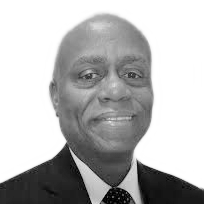Speakers
‹ Back
Professor Sekazi Mtingwa
Chair of Executive Committee, LAAAMP (Lightsources for Africa, the Americas, Asia and Middle East Project) Executive Committee
CV
Sekazi K. Mtingwa (born October 20, 1949) is an American accelerator, nuclear and high-energy physicist. He is a co-recipient of the 2017 Robert R. Wilson Prize for Achievement in the Physics of Particle Accelerators. He is the first African-American to be awarded an APS research prize.
Mtingwa was elected Fellow of the American Physical Society(APS) in 2008 for "his definitive treatment of Intrabeam scattering, his contributions to the wakefield acceleration, and his early recognition of the fixed target physics potential of the next generation electron-positron collider.". He also co-founded the National Society of Black Physicists in 1977 and served in various other national and international initiatives.
Sekazi K. Mtingwa is Chair of the LAAAMP (Lightsources for Africa, the Americas, Asia and Middle East Project) Executive Committee to promote the Utilisation of Light Source and Crystallographic Sciences to Facilitate the Enhancement of Knowledge and Improve the Economic and Social Conditions in Targeted Regions of the World.
Abstract
Abstract:
Lightsources for Africa, the Americas, Asia and Middle East Project (LAAAMP):
An IUPAP and IUCr ISC-Funded Project
Sekazi K. Mtingwa
Chair, LAAAMP Executive Committee
Chair, IUPAP C13 Commission on Physics for Development
Principal Partner, TriSEED Consultants, North Carolina, USA
MIT (Retired)
Sandro Scandolo
LAAAMP Executive Committee
Senior Scientist, Abdus Salam ICTP
Michele Zema
LAAAMP Executive Committee
Executive Outreach Officer, IUCr
We describe an initiative funded by a 3-year, 300K-Euro grant from the International Science Council (ISC) to the International Union of Pure and Applied Physics (IUPAP) and International Union of Crystallography (IUCr) in collaboration with over 30 partner organizations that include 16 advanced light sources to enhance the utilisation of advanced light sources and crystallography in five targeted regions of the world, namely Africa, the Caribbean, Mexico, Southeast Asia, and Middle East. LAAAMP’s programs include the development of a Strategic Plan for each region; a Colloquium programme that sends experienced light source and crystallography users to those regions; establishment of new IUCr-UNESCO Crystallography OpenLabs; design and distribution of a Brochure that describes advanced light sources and crystallography for government officials and the public; 2-month Faculty-Student (FAST) Team training visits to advanced light sources, with approximately 30 new users participating in 2019. Finally, we discuss the path forward for LAAAMP.